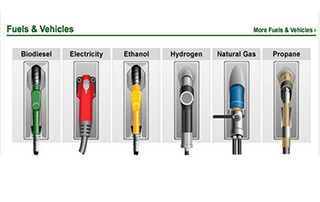
February 12, 2016 / By altametrics / In Advanced Fuel and Payment Controller - Autogas / Comments
The Fundamentals of EMV C-store Operators Need to Know
For years, credit card processing systems in the United States have lagged behind most of the industrialized world. As European nations switched to more sophisticated technologies, American banks and credit card companies continued to use magnetic stripe credit cards which are highly susceptible to hacking and fraud. After nearly a decade-long delay, newer computer chip-enhanced credit cards have been rolled-out nationwide. The initials EMV stand for Europay, MasterCard, and Visa – the three credit card processing companies that conceived of the technology. Inside the credit card is a tiny computer chip that stores the cardholder’s account information in a more secure format that is harder for criminals to hack.
The cost of upgrading to EMV
Credit card fees are the second-largest expense for convenience store management, but with the mandatory roll-out of EMV infrastructure c-store management systems must upgrade to credit card terminals that are EMV card compatible. Every c-store needs to ensure a smooth and timely transition to this upgraded credit card acceptance system.
That switch to EMV platforms –which includes educating and training employees about how to use EMV terminals and technology – can cost approximately $25,000 per store, according to some industry estimates.
Potential liability for C-Stores that don’t upgrade
There is also a deadline for this conversion. By October of 2017 the liability for fraudulent card transactions caused by not accepting EMV will no longer fall on the banks issuing the credit cards but the major burden will shift to retailers. That makes the swift implementation of newer EMV credit card processing technology critical. Meanwhile, during 2016, most credit card users will start carrying EMV cards, so if your terminals only accept the old-fashioned magnetic stripe cards then that could make it impossible to complete point of sale transactions – and result in a significant number of lost sales.
Shortcomings of EMV
The most robust EMV system is called “pin and chip” because in addition to this embedded chip it also incorporates a personal identification number (PIN) that the cardholder must enter at the point of sale – similar to the PIN system used in debit card transactions. Unfortunately, the EMV system adopted by the USA does not require a PIN, which still makes this method vulnerable to fraud. Therefore it is incumbent upon convenience stores to install the most secure payment processing c-store software possible, in order to enhance security protocols and minimize the opportunity for fraudulent hacking of payment systems.



